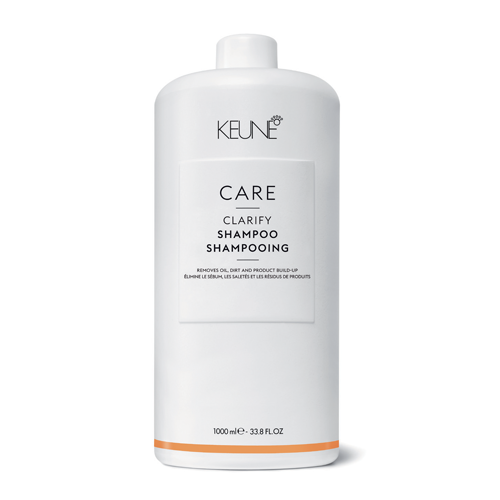Top 10 Tips For Greasy Hair
Do you struggle with greasy hair that feels limp and lifeless? Tired of constantly washing your hair, only for it to become oily again within a few hours? You’re not alone! Greasy hair is a common problem that many of us face, but the good news is that there are plenty of easy and effective ways to combat it. In this article, we’ll be sharing our top 10 tips for clean and healthy locks, so you can say goodbye to greasy hair for good! From adjusting your hair washing routine to making simple dietary changes, these tips will help you achieve the luscious, shiny hair you’ve always wanted. So, let’s get started and discover the secrets to beautiful, grease-free hair!
Causes of Greasy Hair
Before we delve into the tips, it’s essential to understand the causes of greasy hair. Our scalp produces natural oils called sebum, which helps keep our hair and scalp moisturized. However, when we produce too much sebum, it can leave our hair looking greasy and oily. Several factors can contribute to excessive sebum production, including genetics, hormonal changes, stress, and poor diet.
One common misconception is that washing your hair too often can cause greasiness. However, the opposite is true. Not washing your hair regularly enough can lead to a buildup of oil, dirt, and product residue, making your hair look and feel greasy. So, the key to combating greasy hair is to strike a balance between washing your hair regularly and not over-washing it.
The Importance of Hair Hygiene
Before we dive into the tips for clean and healthy locks, it’s essential to understand the importance of hair hygiene. Washing your hair regularly helps remove excess oil and impurities, keeping your hair and scalp healthy. However, over-washing can strip your hair of its natural oils, leading to dryness and damage.
When washing your hair, be gentle and avoid using hot water, as it can stimulate sebum production. Instead, use lukewarm water and massage your scalp with your fingertips to stimulate blood flow and remove impurities. Rinse your hair thoroughly, making sure that there is no shampoo or conditioner residue left behind.
Tip #1: Use a Clarifying Shampoo
Using a clarifying shampoo once a week can help remove any buildup of oil, dirt, and product residue, leaving your hair feeling fresh and clean. Clarifying shampoos contain ingredients that deep-cleanse your hair, such as tea tree oil, witch hazel, and chamomile. However, be careful not to overuse clarifying shampoos, as they can be harsh and drying on your hair.
Tip #2: Wash Your Hair Regularly
As mentioned earlier, washing your hair regularly is essential for maintaining a healthy scalp and hair. However, how often you should wash your hair depends on your hair type and lifestyle. If you have oily hair, you may need to wash it every day or every other day. If you have dry hair, you may only need to wash it once or twice a week.
If you’re unsure how often to wash your hair, start by washing it every other day and adjust as needed. Also, avoid using too much shampoo, as it can strip your hair of its natural oils. Use a quarter-sized amount of shampoo and work it into a lather before rinsing thoroughly.
Tip #3: Use Dry Shampoo
If you’re short on time or don’t want to wash your hair every day, dry shampoo is a great alternative. Dry shampoo absorbs excess oil and adds volume to your hair, making it look and feel fresh. However, be careful not to overuse dry shampoo, as it can lead to buildup and clog your hair follicles.
To use dry shampoo, spray it onto your roots and massage it into your scalp. Let it sit for a few minutes before brushing it out. You can also use dry shampoo before bed to absorb oil overnight and wake up with fresh-looking hair.
Tip #4: Rinse with Apple Cider Vinegar
Rinsing your hair with apple cider vinegar can help remove buildup and balance your scalp’s pH levels, preventing excess oil production. Apple cider vinegar is also rich in vitamins and minerals that nourish your hair and improve its overall health.
To use apple cider vinegar as a hair rinse, mix one part apple cider vinegar with two parts water and pour it over your hair, making sure to massage it into your scalp. Let it sit for a few minutes before rinsing it out with cold water.
Tip #5: Avoid Touching Your Hair
Touching your hair throughout the day can transfer oil and dirt from your hands to your hair, making it greasy. It can also stimulate sebum production, leading to excess oil. So, try to avoid touching your hair as much as possible, especially if your hands are dirty or oily.
If you need to style your hair or fix it throughout the day, use a comb or brush instead of your hands. You can also use a headband or hair tie to keep your hair out of your face.
Tip #6: Use a Hair Mask Once a Week
Using a hair mask once a week can help nourish and strengthen your hair, preventing breakage and damage. Hair masks contain ingredients that penetrate the hair shaft, such as avocado, coconut oil, and honey. They also help remove buildup and impurities, leaving your hair feeling soft and smooth.
To use a hair mask, apply it to your hair and leave it on for the recommended time, usually 10-20 minutes. Rinse it out thoroughly with lukewarm water, making sure to remove all the product.
Tip #7: Choose the Right Hair Products
Choosing the right hair products can make a big difference in how your hair looks and feels. Look for products that are designed for your hair type and avoid those that contain harsh chemicals, such as sulfates and parabens.
When choosing a shampoo and conditioner, look for gentle, moisturizing formulas that won’t strip your hair of its natural oils. You can also look for products that contain ingredients that help regulate sebum production, such as tea tree oil and aloe vera.
Tip #8: Use a Silk Pillowcase
Using a silk pillowcase can help prevent frizz and breakage, keeping your hair looking healthy and shiny. Silk is gentle on your hair, reducing friction and preventing tangles. It also helps regulate your scalp’s moisture levels, preventing excess oil production.
Tip #9: Avoid Heat Styling
Heat styling tools, such as flat irons and curling irons, can damage your hair and stimulate sebum production, leading to greasiness. So, try to avoid heat styling as much as possible, especially if you have oily hair.
If you must use heat styling tools, use a heat protectant spray and keep the temperature low. Also, avoid using heat styling tools on wet hair, as it can cause damage and breakage.
Tip #10: Eat a Healthy Diet
Eating a healthy diet rich in vitamins and minerals can help improve your hair’s overall health and prevent excess oil production. Foods that are rich in vitamin A, such as sweet potatoes and carrots, can help regulate sebum production, while foods that are rich in omega-3 fatty acids, such as salmon and walnuts, can help nourish your hair and prevent breakage.
Conclusion
Greasy hair is a common problem that can be frustrating to deal with. However, by following these top 10 tips for clean and healthy locks, you can say goodbye to greasy hair for good. Remember to strike a balance between washing your hair regularly and not over-washing it, choose the right hair products, and eat a healthy diet rich in vitamins and minerals. With these tips, you can achieve the luscious, shiny hair you’ve always wanted!





2 Responses
These are all fantastic tips. I practice most of them.
I have always had problems with greasy hair and your tips are definitely coming in handy! I will try them out 🙂 Thank you for the great tips and I really like your site and what you have done with it.. Much Love..